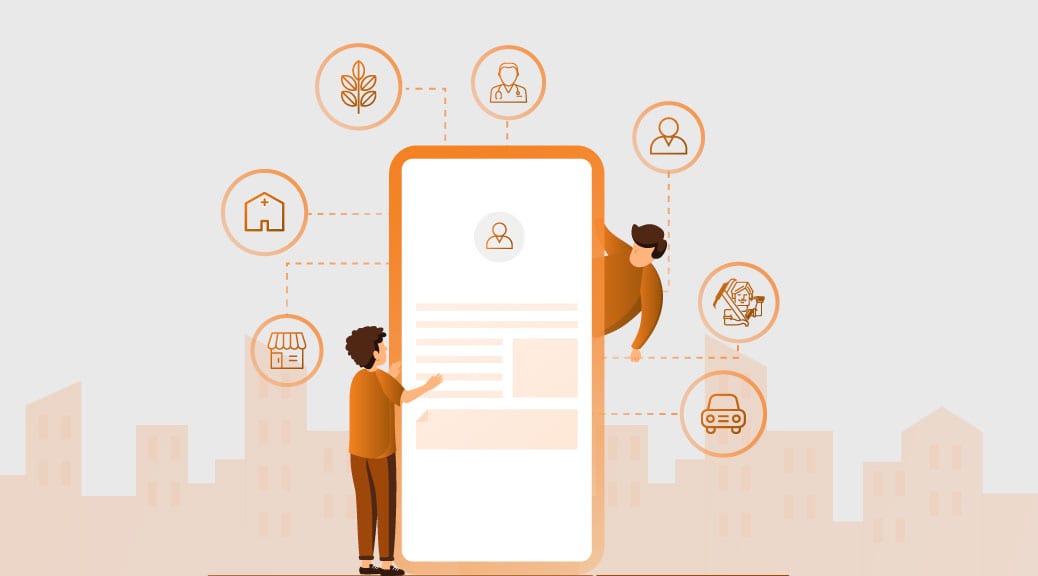Customer Profiling and Segmentation: Are You Doing It The Right Way?

Leaders do things differently; they learn from mistakes, observe the competition, apply improvements where necessary, and are ever agile in their approach. For successful FMCG & Consumer Goods companies, it is important that they know their customers better than others.
As a brand, there could be millions of retailers who are your potential customers. To excel in your growth and expand your business, customer profiling and segmentation is a must.
What is Customer Profiling and Segmentation?
Customer profiling and segmentation is the gathering and analyzing of customer data to develop detailed customer profiles and then segregating these into specific groups. This involves considering demographics, preferences, and purchasing behavior to understand the target audience. Segmentation allows brands to tailor marketing strategies to customers and thereby optimize the overall shopping experience.
Why Do Companies Struggle to Achieve Their Goals?
One of the main reasons for many FMCG & Consumer Goods companies struggling to achieve their sales goals is that they have a huge customer base (retailers) but are not able to target the right customers in the right way. The problem does not disappear until one takes a step back and defines their customer segments in a way that aligns with their goals. Without proper profiling and segmentation of the customer base, many business managers will always find it hard to achieve optimized market coverage.
Many companies target the wrong class of retailers for their campaigns and end up failing to achieve their company goals. One can save their time, effort, and money by focusing on the right class of retailers and start drawing happy and long-lasting customers by creating a set of customer profiles and classes.

Customer Profiling and Segmentation: What Do They Entail?
Proper Customer profiling and segmenting involves getting the complete insight into the store details like store location, store size, store surroundings, the range of products it sells, the competitors which are targeting the store, the different price range the store is offering, what space is allocated for your products, etc. for each of those stores. Profiling your customers, when done in the right manner, provides you with all the data that you can use to segment your company’s customer base into different classes as per your need.
Segmentation and customer profiling allows business leaders to know their customers better so that they can be targeted more efficiently.
Proper customer profiling and segmentation allows business leaders to have a complete understanding of the retail stores. Knowing their transactional, ordering and behavioral patterns help businesses make informed decisions. Ultimately, this helps businesses to deliver enhanced customer engagements and increase sales.
Typically, FMCG & Consumer Goods companies segment their customers based on intuitions. The question here is, are they doing it the right way? Companies do the segmentation based on the feedback either from their sales reps or the area managers. The typical data points which are considered by the sales reps include the size of the store or the frequency of the sales orders collected by them in the past.
Understanding Which Segmentation Method is Incorrect and Unreliable
Let us consider a sales rep visiting the biggest retail store in an area. After having a glance, the sales rep might give feedback based on his intuition that the store is a class A and is the best for selling the company’s product. But the catch is here; what if the store looks huge but allocates only 10% of the space for products of the company’s domain? It might be a class A store for a lot of other products but it isn’t class A for your business products.
Let us consider another case where the sales rep might give feedback depending on the sales of a particular store. Suppose a store gives large sales and the company classifies it as a class A store. But what if it doesn’t have the potential to grow twice or thrice the number of sales it is presently giving? Another store might be giving fewer sales but it might have the potential to give you the maximum number of sales which is not being met because the sales reps are not engaging with the store frequently owing to its class.
The Right Way to Classify Stores
Whenever sales reps visit a particular store, they can capture a lot of relevant data points. These data points can be the location of the store, store size, the range of products it sells, the competitors which are targeting the store, the different price range the store is offering, space which is allocated for the company’s products, presence of any dedicated staff available at the store for your products, products shelving, etc. Such data points help in capturing the real data of the stores and eliminates the chances of classifying them based on intuitions.
Once the classification of retail stores is done, the sales leader can then plan different campaigns based on the different segments. They can also take decisions like the frequency of visits to a particular store; if a store has more potential and is in class A, the frequency of visits can be increased to increase revenue. Sales leaders can also plan what kind of sales rep needs to be sent to a particular store; an experienced sales rep can be sent to a high-class store and vice versa. The company can also plan trade schemes and offers to be given to the store depending on the classification of the store.
BeatRoute’s Customer Profiling and segmentation module help in collecting all relevant data points so that the stores can be organized into various classes. This helps in understanding the true sales potential of every store and is independent of any kind of intuition-based feedback or manual recommendation.
Do you want to join hands with BeatRoute like hundreds of other FMCG & Consumer Goods companies and increase your returns on investment? If yes, click here to book a free online demo for customer profiling and segmentation module.
Frequently Asked Questions
How does Customer Profiling and Segmentation help in increasing sales?
Proper KYC backed up with the segmentation allows business leaders to have a complete understanding of the retail stores. Knowing their transactional, ordering and behavioral patterns help businesses make informed decisions. Ultimately, this helps businesses to deliver enhanced customer engagements and increase sales.
What things are to be avoided while doing customer profiling and segmentation?
Typically, profiling and segmentation of your customers are done based on the intuitions of the sales reps. However, this is not the right way and has to be avoided.
The right way of doing customer profiling and segmentation is by collecting and analyzing relevant data points and classifying the stores based on the sales potential of the stores to get maximum output.
How does BeatRoute assist in Customer Profiling and segmentation?
We follow a Data-Driven segmentation approach that allows you to capture the true sales potential of each store. It then allows you to optimize the sales operations in such a way that you achieve maximum returns on investment from every store you onboard as a customer.
About the Author
-
Nikhil is a marketing professional with a passion for enterprise SaaS and the role that technology can play in helping businesses succeed. He is passionate about enabling digital transformation for retail brands, and explores how brands can enhance their sales execution and distributor engagement with the help of technology.
Use Goal-Driven AI to Achieve Retail Sales Uplift, Today!
Join enterprises in 20+ countries that trust BeatRoute, the globally dominant AI platform for sales force automation, field sales, DMS, and eB2B
Latest Insights & Articles
Here are the most impactful articles, platform updates, ebooks and reports for you.



